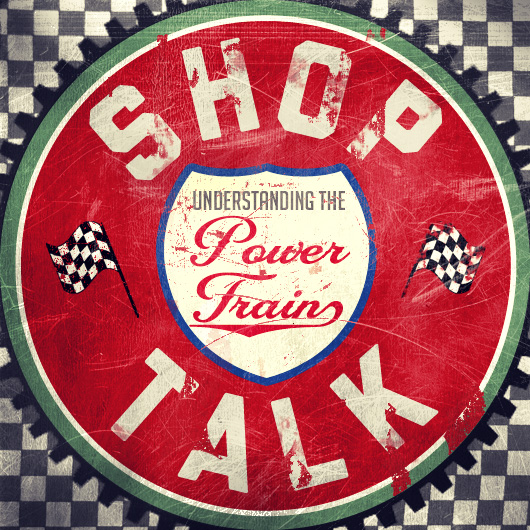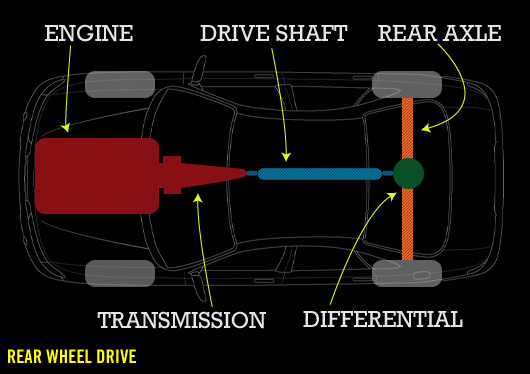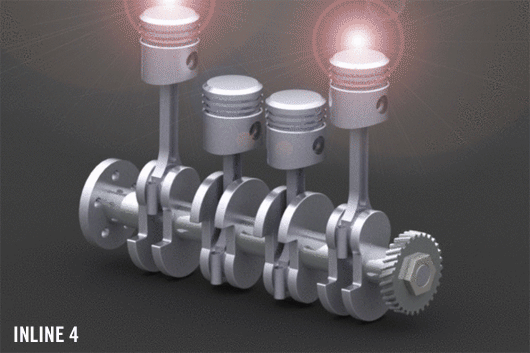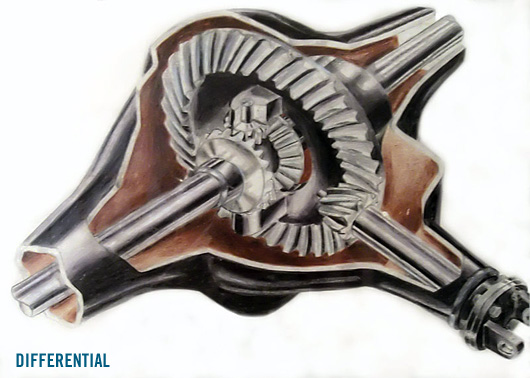Last Saturday I asked my nephew what he wanted for his first car. He’s about to turn 15 and I figured he would be itching to discuss the topic. His response was this, “I don’t know. Maybe an Impala.” “Cool!” I say “When I was in high school I had a 1977 Impala on 17’s. Those were the 22’s of 1999.” What my nephew said next will haunt me for the rest of my days. “I was thinking like a 2000 or newer. Juju has one and it’s pretty nice.” For the record, Juju is his grandma. My nephew literally wants a grandma car. At some point in time between the DVD release of 2Fast 2Furious and now, young men lost interest in cars. I’m not sure why and I honestly don’t care. What matters to me is reversing this trend.
There is no rule that says wearing a tie every day to work, having a pair of boots that are only for going out with the guys, and having a basic knowledge of how your car works have to be mutually exclusive.
You don’t have to be an engineer or mechanic to understand the fundamentals of how an automobile works. You don’t have to be able to tell the difference between an inline 4 and v6 just by the exhaust note. Your car is an integral part of your life and a large investment item. Knowing some basic information will help you better understand what needs fixing when you have to take your car to the shop, and allows you to have a chance at holding your own when your future Father-in-law wants to tell you about his ’68 Triumph Spitfire.
Let’s begin by looking into what makes it move. I will try and keep each section simple, but please understand that the average car has over 20,000 parts.
Powertrain
Also known as the drivetrain, this is the collection of parts that make your vehicle move. It consists of your engine, transmission or transaxle, and drive axle. Notice I said drive axle? You can have an axle that doesn’t power the vehicle, but I’ll cover that in the suspension article.
First up is the engine.
The engine is what makes your car or truck move. You feed it fuel, air, and spark, and in return it provides you with horsepower, torque, and noise. In the old days, a bigger engine meant more power. Now, thanks to science, automakers are able to extract old school v8 power from a 4 cylinder motor less than half the size.
A quick word on engine types: “Inline” and “V” are used to describe the orientation of the cylinders in the engine block. Most all 6 and 8 cylinder engines are V’s. This allows the engine to be shorter in length since the cylinders sit side by side. 99% of all 4 cylinder engines are inline motors. Yes, there are 4 cylinder V’s but if you’re reading this, you don’t drive one. Nothing will kill your coolness factor quicker than telling a car person that you have a v4 in your Accord.
To better understand what your engine uses air, fuel, and spark to make this magical noise, let’s look at each item individually. To keep things simple, I will only focus on vehicles with electronic fuel injection as this is what most of us drive. Carbureted vehicles work in a similar fashion, but if you’re driving one, you probably know all this stuff already as modern cars use fuel injection.
Fuel
When you put gas in your car, it goes in the tank. Duh, right? When you start your car, fuel is picked up by the fuel pump and sent through highly pressurized lines into the injectors. What happens next depends on your specific vehicle and fuel injection system, but basically it is shot into the cylinders as a fine mist. The mist mixes with the air, a spark hits it, and BOOM! This happens approximately 3,599 more times, and your 4 cylinder car is able to idle quietly at 900 revolutions per minute (RPMs).
The more fuel you add, the more power you get. Up to a point at least. If you add too much fuel, and not enough air, your car will spit black smoke from the tailpipe, sputter, and eventually stall. This condition of too much fuel and not enough air is called “running rich”.
Air
Your car’s engine is essentially an air pump. Air goes in the intake and air goes out the exhaust. There is nothing special about the air. It contains oxygen, trace amounts of hydrogen, carbon-dioxide, nitrogen and whatever else is floating around where you live. It comes into your intake, which is usually a black plastic tube running from the front or side of the top part of your engine. The air filter keeps bugs and dirt from getting into your motor, and then the air goes into the cylinder through the intake valves.
There, it mixes with the fuel mist, a spark happens, and yep, you guessed it…BOOM! Just like with fuel, you can add more air to get more power. This is the reasoning behind all of those shiny cold air intakes you see in Paul Walker movies. Again, just like with fuel, too much air can cause problems as well. If you have too much air, and not enough fuel, your car will lose power and possibly stall. This condition is called “running lean”.
The air and fuel ratios are controlled by your car’s computer, so just upgrading the intake won’t hurt you. Just make sure you don’t damage any hoses or sensors when you’re installing it.
Spark
Spark is a tricky mistress. Anyone who has attempted to work out an electrical problem in an older car will agree. In the olden days, you had a distributor that was mechanically connected to the engine. Inside the cap was a small bit of metal that spun around and made contact with spark plug wires. When that contact happened, electricity was sent to the spark plugs, which in turn created that BOOM referred to previously.
Today’s cars use coil packs instead of a distributor. They are more accurate, more reliable, and unfortunately cost more to replace…which luckily doesn’t need to happen often. There is generally one coil pack for each cylinder. These coil packs are controlled by the car’s computer and get their readings from a small sensor within the motor. It sends a signal to the computer, and the computer tells each individual coil pack when to fire. It sounds sophisticated, but even my 2002 Jeep Wrangler has coil packs, and it came from the factory with no carpet.
I’m sure you won’t be surprised to hear that if you add more spark, you can get more power. The only difference between this and the air/fuel issues is that I have never once heard of an issue with too much spark. Weak spark can be a problem though. It’s like trying to start a fire with a flint. Sure you can do it, but if you need to do it 3,600 times a minute, you’re probably going to be in trouble.
Most issues with spark come from worn out spark plug wires or worn out spark plugs. When a spark plug is damaged it is called a “fouled plug”. There are many different ways this can happen, and there are a lot of nice reference guides out there to help identify your issue. This is my favorite. Most new cars have eliminated spark plug wires too. The coil pack sits directly on top of the plug. If your car is having issues with idling rough, trouble starting when it’s been sitting for a while, or trouble accelerating, check your plugs and wires. If you don’t see an obvious issue, you may want to call your friendly neighborhood mechanic.
Transmission
Next in line is your transmission or transaxle. Which one you have is determined by whether your vehicle is front wheel drive (FWD), rear wheel drive (RWD), or all wheel drive/ four wheel drive (AWD/4WD, there is a slight difference but I’ll get to that later).
If your vehicle is RWD or a truck based 4WD then you have a transmission. A transmission has the engine attached at the front and a single output shaft at the back. In a two wheel drive vehicle like a Challenger or a Mustang, a drive shaft is attached to the back of the transmission and it transfers the power back the rear axle. If your vehicle is FWD or one of the popular AWD vehicles, you have a transaxle. It’s called that because the transmission and axles are all in one unit. In a FWD vehicle the engine faces sideways. The front points towards one front wheel and the back points towards the other. The transaxle bolts to the back of the motor and sends power out through two shafts, one to the left wheel and one to the right. This makes for a tidy little package that keeps all of your vehicles go-go bits in one convenient location. Although there is a difference in them, most of us normal people just call them all transmissions.
Why do you need a transmission? Well, strictly speaking you don’t. But, if you don’t have one it will be very difficult for you to get your car moving from a dead stop or attain interstate speeds. You see, the transmission contains gears and those gears help the vehicle use the power made by the engine. It works almost exactly like the gears on a bicycle. In a low gear, you pedal many times, with very little resistance and it’s easy to get rolling or climb hills. You upshift and the pedaling gets a little slower, but the bike is moving faster. You are the engine and the gears are just like gears in the transmission.
Transmissions come in manual and automatic models. You should already know the difference and you should know how to drive both. Unless one has a physical handicap, every person should know how to drive a manual transmission vehicle. You don’t want to get caught in a situation, especially an emergency, where you’re called upon to drive a car with standard transmission and not be able to perform.
A quick word on transfer cases: Only 4WD and AWD vehicles have these. They attach to the back of the transmission and send power to the other two drive wheels. Most of the time, in a 4WD vehicle, you are actually in 2 wheel drive. When I drive on the street, my Wrangler is driven by the rear wheels. When I go off-road, I engage the transfer case by pulling a lever. Doing this causes the transfer case to send power to the front wheels too. Thus, I am now in 4WD. In an AWD vehicle like the Subaru Impreza, Nissan GTR, or Honda Ridgeline, the transfer case is automatic. It uses math and science to determine how much power should be sent to each set of wheels at all times.
Here is a video by Jeep that explains 4WD in terms simple enough the non-engineer to understand.
http://www.youtube.com/watch?v=yxHQeO-Y7GU
Axle
The last stop on our journey through powertrain is the axle. For simplicities sake (if you can call all of this simple) I’ll stick with a RWD set up. The rear axle is also referred to as the rear end. It is connected to the driveshaft by a universal joint or u-joint. These connectors also serve as a built in weak point in your powertrain. If you ever experience a popping or clunking sound when accelerating or decelerating, have your u-joints checked. It could be something else but these are supposed to fail before anything else. They are cheap and relatively easy to replace.
Moving on, in the center of the axle is a differential. It is also referred to as a “diff”, “chunk”, or “pumpkin” if you are from South Alabama. A differential is an incredibly complex and ingenious invention. If you’re really interested in how they work, here is a very dull but informative video that Toyota uses to train its sales people and technicians.
The gear within the differential is the last thing that determines how fast you travel and what RPM your engine runs at while driving at a given speed. The ratio is always given as a “to one” number like 4:1 or 3.57:1, but any car person will just say the first number. The higher the number the more times the driveshaft turns before the axle does.
A small change here can make a very large difference in acceleration. Here is a quick and simplified example:
A base model truck comes from the factory with 3.55 gears. If you buy the same truck with the tow package, it would come with 4.11 or maybe even 4.56 gears. This makes it easier for the truck’s engine to create more power at a lower speed. It also makes the engine travel at a higher RPM at any given speed. In the base model truck you would be at 2,000 RPMs at 60MPH. In the truck with the tow package you would be at 2,500 RPMs at the same speed. After it makes its way through the differential, the power travels down the axle shafts and turns your wheels. Finally, you’re moving down the road.
All of this happens without much help from you. However, like I said earlier, they are all important things to know. Understanding how your vehicle works can keep you from getting duped by a shady mechanic. You never know, if your boss is into cars, this could keep you from sounding like a complete idiot when you both end up at the bar during your company’s Christmas party. In our next installment I’ll go over the suspension and chassis, and explain how you can have a car that you can take on spirited weekend drives without rattling your teeth out on the commute to work each day.



















